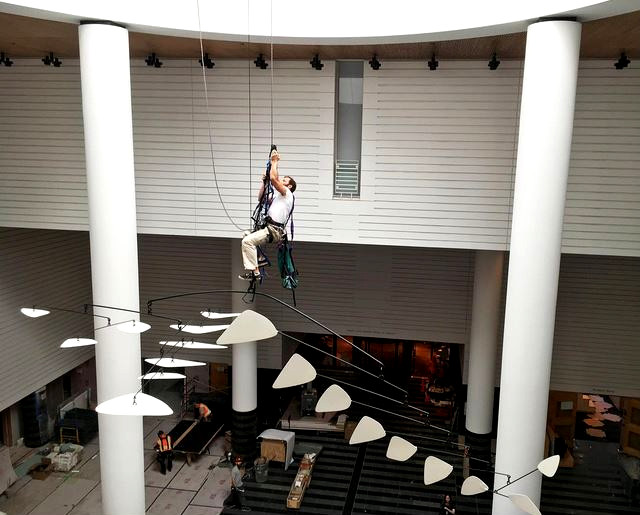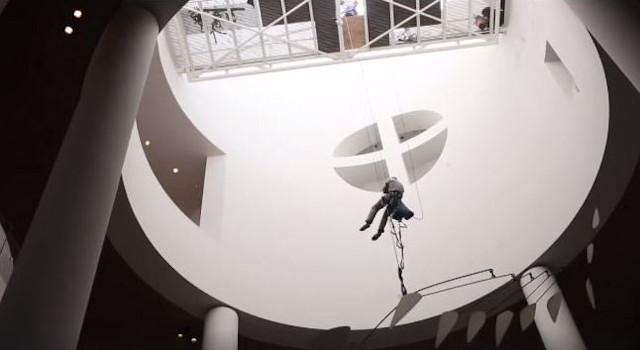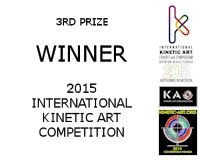Hanging and Standing Mobiles Exhibit – Call to Artists
Call to artists for The Mobile: Composition in Motion, an exhibit of hanging and standing mobiles at The Carrack in Durham, NC.
Artists working in any medium, regardless of mobile-making experience (learn to make mobiles), are invited to try their hand at creating innovative pieces that are set into motion through air current. Unique interpretations of mobiles as sculpture in motion are encouraged. Challenge what’s possible in terms of form, materials, construction, movement and scale.
The exhibit will also provide information that helps visitors understand the principles that commonly govern mobile construction and ways in which the exhibiting artists may have adhered to or defied those principles.
There is no submission fee for this juried exhibit and you can enter as many pieces as you like. The Carrack is a zero-commission art space and therefore 100% of any sale proceeds go directly to the artist.
The submission deadline is August 7th 2016. The exhibit opens November 9th 2016. Please see www.themobileshowdurhamnc.com for more details, and follow up-to-date information on Facebook and Instagram.
Update (Oct 31 2016):
Artists go ‘mobile’ at The Carrack
New Calder Exhibit “Motion Lab” at SFMoMA – Installation of Large Mobile in Atrium
A new Alexander Calder exhibit titled Motion Lab at The San Francisco Museum of Modern Art opened this past Saturday and will run until Sept 10 2017. It traces Calder’s explorations of motion from the late 1920s to the late 1960s.
Photos of Rigger Lawrence LaBianca lowering from the SFMOMA sky bridge to finish installing Calder’s 27-foot Untitled (1963) mobile in the Evelyn and Walter Haas, Jr. Atrium:
There’s also a video of the installation by the San Francisco Chronicle.
– See some of my mobiles or read more of my blog about mobiles –
Technical Behind-the-Scenes Aspects of Designing, Making and Installing a Large Custom Mobile
Some of the technical (“behind the scenes”) aspects of designing, making and installing a large custom mobile.
Design:
Proposing a variety of designs to the client (see the full render designs).
Site inspection.
Planning:
Creating the 3d model of the space and the sculpture. Making adjustments to ensure that as the kinetic sculpture rotates and moves with the air currents, it will always remain out of reach from the various floors.

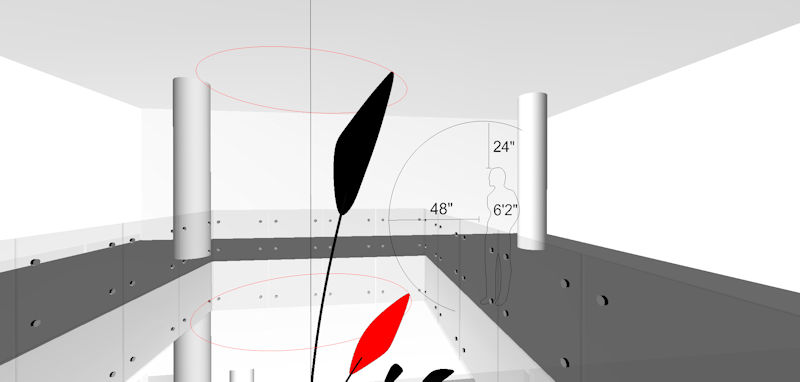
Establishing the engineering data.

Fabrication:
Preparing the file containing the shapes (Calder style/inspired with this specific design chosen by the client) for laser cutting.

Custom made knurled pins pressure fitted with a 10-ton press.
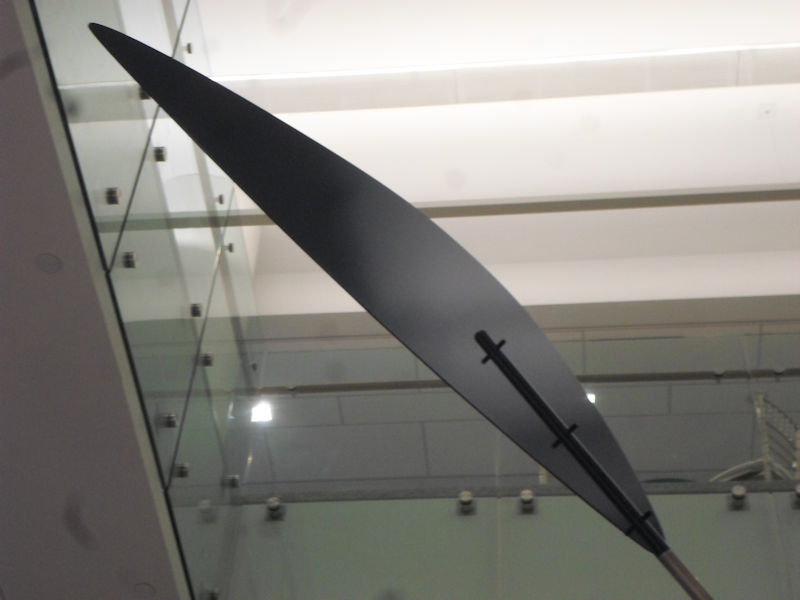
Verification:
Confirming that all the balance points have been calculated correctly, in other words, reality needs to confirm theory (with the help of a crane).
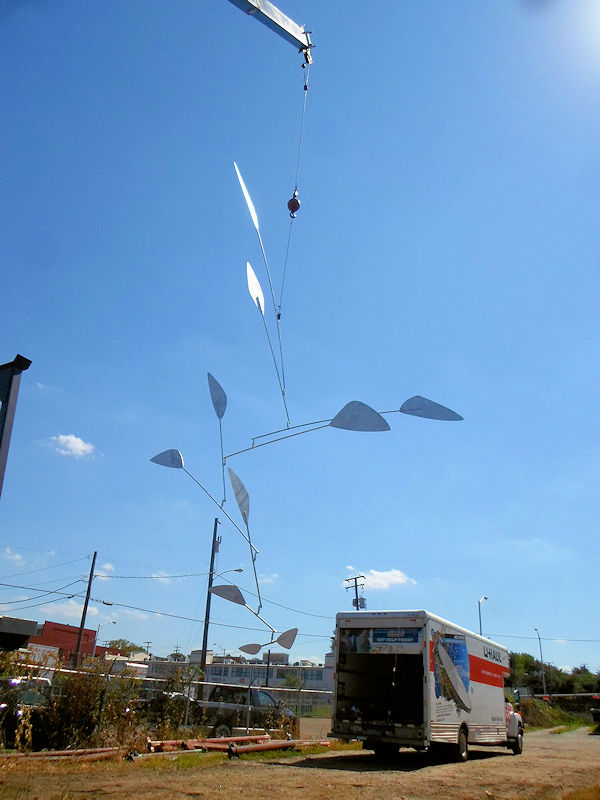
Transport:
Keeping it safe from vertical shocks caused by bumps and potholes as it’s transported (in this case) 500 miles / 800 km across the Appalachian Mountains.
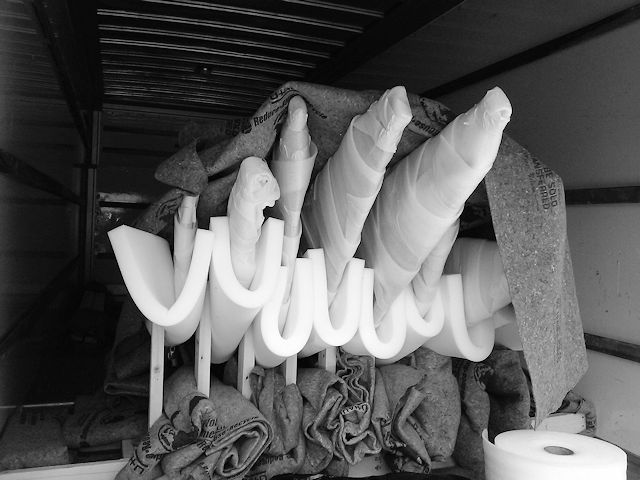
Installation:
Planning the layout of the mobile parts on the installation lift, so the overall 33 foot sculpture can be raised through the 22 by 15 foot opening in the atrium from the ground floor to the upper floors.
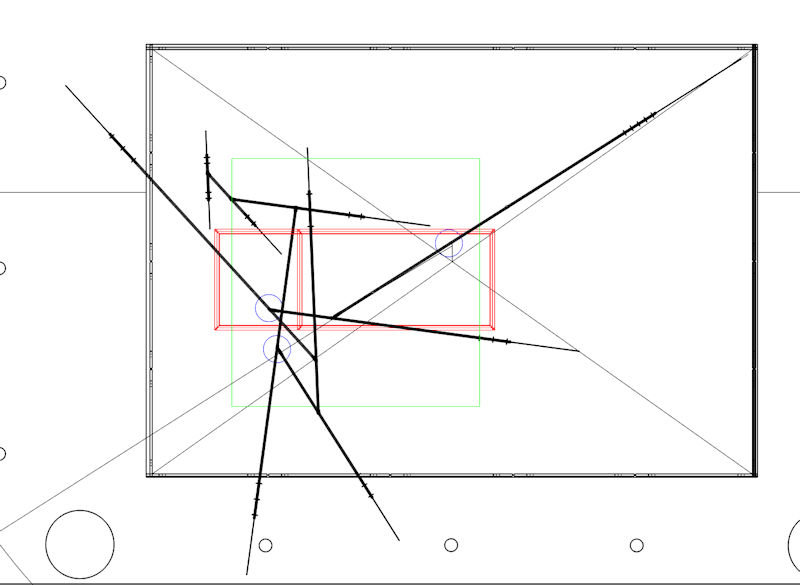
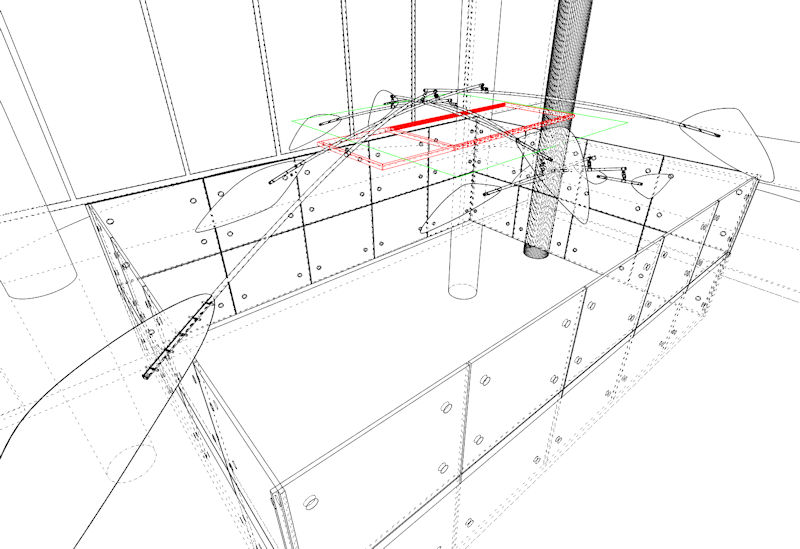
See the finished and installed mobile.
See more of my large custom mobile projects.
9 Original Calder Works Coming to Auction for the First Time
A group of nine works by Alexander Calder will be sold at Christie’s Post-War and Contemporary Art Evening Auction in New York on May 10th 2016. All of them were made by Calder in 1955 while visiting Ambalal Sarabhai’s family estate in India. Calder spent three weeks at the secluded 20-acre estate, in a makeshift studio constructed in the garden with “a water-buffalo lady and a calf” for company, as he wrote in his book (Calder: An autobiography with pictures, 1966). This is the first time this group of Calder sculptures is coming to auction. Among the works to be auctioned:
Sumac #17
Hanging Mobile
Sheet metal, wire and paint
Inspired by the flowering plant of the same name
Estimated at US$4 million to US$6 million
[Update: Price Realized $5,765,000]

Related: Watch a 360-degree view of Calder’s large red mobile Sumac created in 1961.
How the visit to India came about, in Calder’s own words: “In 1954, I received a letter from a young Indian woman, Gira Sarabhai, youngest of eight children of a large wealthy family in Ahmedabad, which is somewhere halfway between Bombay and Delhi. She offered Louisa and me a trip to India, if I’d consent to make some objects for her when there. I immediately replied yes.”
Calder in India in 1955 (Louisa Calder, his wife, is seated atop the elephant):
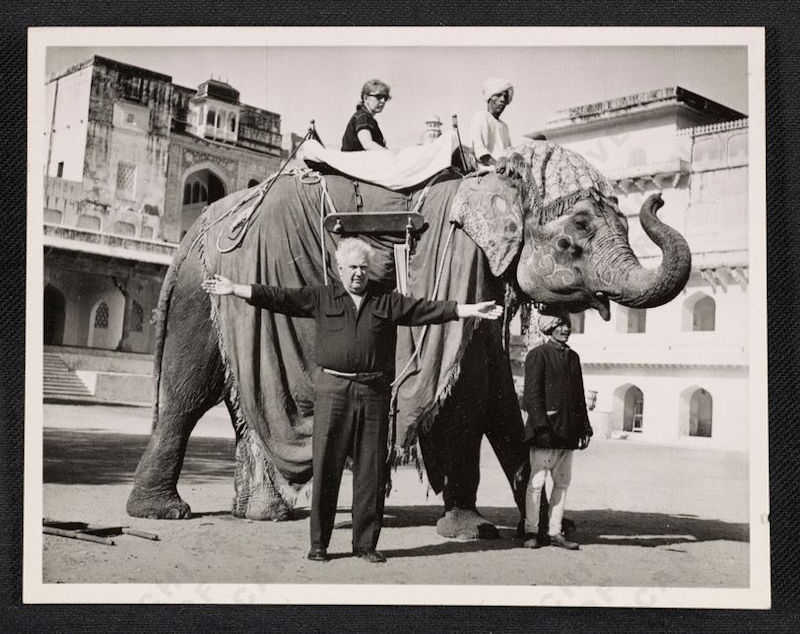
Estimates range as high as US$10 million, with a total pre-sale estimate of around US$26 million to US$38 million.
Read The forgotten journey of Alexander Calder and view the e-Catalogue. Also see An Expert Look at Never-Before-Auctioned Alexander Calder Works and Mobile Revolution.
– Read more of my blog about mobiles or see some of my mobiles –
The 5 Largest Mobiles Worldwide That I’m Aware Of
.125 by Alexander Calder
In collaboration with SOM
At the International Arrival Building at JFK Airport

The 5 largest mobile sculptures worldwide that I’m aware of – all by Alexander Calder:
- White Cascade (1976) at the Federal Reserve Bank of Philadelphia – 100 feet / 30 meters
- Untitled (1977) at the National Gallery of Art – 76 feet / 23 meters
- Eléments Démontables (1975) in the collection of the Calder Foundation – 47 feet / 14.5 meters
- .125 (1957) at JFK Airport New York City – 45 feet /13.5 meters
- Mountains and Clouds (1986) at the Hart Senate Office Building – 42.5 feet / 13 meters
The largest mobile that I’ve made to date measures 33ft (10m).
In 1962, George Rickey (the other major twentieth-century artist to make movement a central interest in sculpture next to Calder) wrote: “The great size of recent pieces carried out by metalworkers has resulted in Gargantuan designs beyond [Calder’s] control, loss of scale, and immobility; gross execution in very thick material substitutes for skillful analysis of engineering problems and economy of means. In his thirty-foot hanging mobile London, made especially for the Tate by welders in Paris from a small maquette and not assembled till the exhibition, the plates and rods are far heavier than necessary, and it hangs motionless and red beneath the lofty vault.”
“People often make a big deal about Calder’s training as an engineer, but in reality his mechanics are pretty rudimentary. Surprisingly for a history major, Rickey was a master engineer.” – Tim Prentice
There’s an incomplete List of Alexander Calder’s Public Works. You can help expand it if you know of additional ones.
The Calder Foundation’s new website also has an interactive map of Calder’s sculptures around the world.
The largest mobile sculpture to ever appear at auction, measuring 25 feet (7.6 meters), is Blue Moon (1962) by Alexander Calder, which sold at Sotheby’s in New York City on May 15th 2024 for $14.4 million:

Eléments Démontables was suspended in the atrium of the Ruffin Building in Wichita, Kansas from 1975 until 2024, and is now in the collection of the Calder Foundation. An article “Giant Mobile Flies at Fourth” from The Wichita Eagle on March 9th 1975 when the mobile was originally installed:



